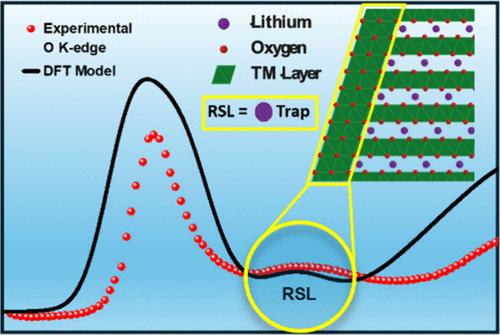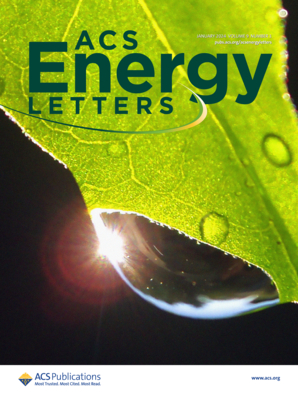Nature of the Oxygen-Loss-Induced Rocksalt Layer and Its Impact on Capacity Fade in Ni-Rich Layered Oxide Cathodes
IF 19.3
1区 材料科学
Q1 CHEMISTRY, PHYSICAL
引用次数: 0
Abstract
In Ni-rich layered oxide cathodes, cycling above the oxygen-loss threshold voltage (∼4.3 V vs Li+/Li) promotes structural transformations at the cathode surface. These transformations can result in various thermodynamically favorable rocksalt-like (RSL) structures (NiO, NiOx, and/or LiyNizO) that have different Li+ transport properties. Elucidating the precise phase type in the RSL can help determine design strategies to improve Li+ kinetics and identify design rules to suppress capacity fade in Ni-rich cathodes. This study utilizes surface-sensitive X-ray absorption spectroscopy in combination with first-principles simulations and distinguishes the layered oxide spectroscopic features from those of surface-reduced layers of pure NiO and LixNi1–xO. The transport of lithium ions through this oxygen-loss-induced surface-reconstructed layer is studied with operando X-ray diffraction in a pouch cell as a function of cycling aging and constant voltage protocols.

求助全文
约1分钟内获得全文
求助全文
来源期刊

ACS Energy Letters
Energy-Renewable Energy, Sustainability and the Environment
CiteScore
31.20
自引率
5.00%
发文量
469
审稿时长
1 months
期刊介绍:
ACS Energy Letters is a monthly journal that publishes papers reporting new scientific advances in energy research. The journal focuses on topics that are of interest to scientists working in the fundamental and applied sciences. Rapid publication is a central criterion for acceptance, and the journal is known for its quick publication times, with an average of 4-6 weeks from submission to web publication in As Soon As Publishable format.
ACS Energy Letters is ranked as the number one journal in the Web of Science Electrochemistry category. It also ranks within the top 10 journals for Physical Chemistry, Energy & Fuels, and Nanoscience & Nanotechnology.
The journal offers several types of articles, including Letters, Energy Express, Perspectives, Reviews, Editorials, Viewpoints and Energy Focus. Additionally, authors have the option to submit videos that summarize or support the information presented in a Perspective or Review article, which can be highlighted on the journal's website. ACS Energy Letters is abstracted and indexed in Chemical Abstracts Service/SciFinder, EBSCO-summon, PubMed, Web of Science, Scopus and Portico.
 求助内容:
求助内容: 应助结果提醒方式:
应助结果提醒方式:


